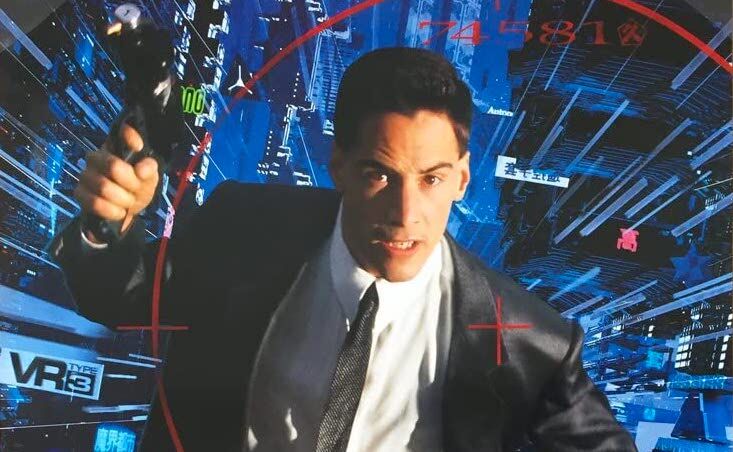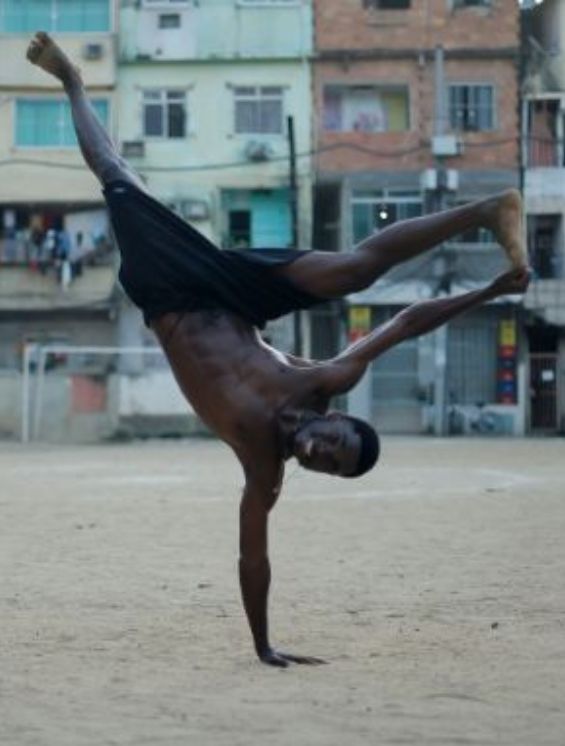The videogame
aesthetics is flowing.

Johnny Mnemonic 1995
The Internet has emerged from a scenario in which corporatism and globalization were in a rise. Then, someplace, a phenomena came forth and reflected the antithesis of corporate aesthetics: Cyberpunk.
Cyborgs, vandalism and a decadent futurism — Cyberpunk has manifested itself in literature, movies and music, therefore promoting a critical vision of society, culture and mostly of what was known as reality.

Blade Runner 1982
After a few years living on-line, the physical world is yet our biggest reference. Whenever we think about a better, sustainable and empathetic future, we still see ourselves through nature — heck, we even conceive the future from it! But then the pandemics came and clearly intensified our interaction with social networks, avatars, filters and the game world.
In 2020, the video game market outcame movies’ and sports’ combined. Since 2001, when Grand Theft Auto 3 was released, open world games have been creating nonlinear narratives in which users experiment immersions that allow them to create many different stories. In Cyberpunk 2077, for example, the scenario is Night City, an immersive place with no laws and a substantial fusion between Eastern and Western.

Cyberpunk 2077, an open-world, an action-adventure story set in Night City, a megalopolis obsessed with power, glamour, and body modification.
Although nowadays games are diverse, there is an important connection between 80’s Cyberpunk and current ones: the reaction to reality.
AFTER ALL, IN A WORLD THAT ONCE AGAIN SEEMS CHAOTIC, AN ESCAPE ROUTE COMFORTS THE MOST.
"One of the main pleasures offered by games is the experience of flow. As early as the 1970s, the psychologist Mihaly Csikszentmihalyi applied the term “flow” to describe a particular state "in which people are so involved in an activity that nothing else seems to matter; the experience itself is so enjoyable that people will do it even at a great cost, for the sheer sake of doing it.”
It’s no accident that several companies and artists have adventured themselves towards flow narratives in order to create new media. Actual Objects founders (an LA studio that creates immersive worlds and has clients as Nike and North Face) explain how we are destined to be more and more acquainted with games.

North Face by Actual Objects
“Digital avatars are going to be a part of what the future looks like. They look like us, they kind of move like us, perhaps there's a way to see ourselves in them. Where the CGI comes in is a novel thing that gives people maybe a moment of pause,” Claire Cochran offered. “To say, ‘wait, something's off here, let me investigate this a bit more.’” adds Rick Farin, both founders of Actual Objects in an interview with SSENSE.
Games today offer a beyond entertainment narrative — they are immersive, customized. Once players get there, they go to a different world, become other people or even entities in a flow reality.
Flow is the process of achieving happiness through control over one’s inner life. Flow culture is one in which individuals aim at nothing higher than personal satisfaction. The psychology of flow does not encourage them to think of themselves as actors in a larger social or political drama.
We wish to be as close as possible to nature but when two different realities merge, it allows us to dream even bigger. Maybe gamers have anticipated themselves by choosing the red pill and realizing that the future is in a post-human imagination, somewhere in between man and machine.



